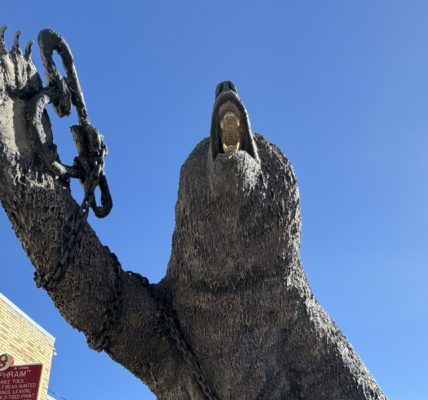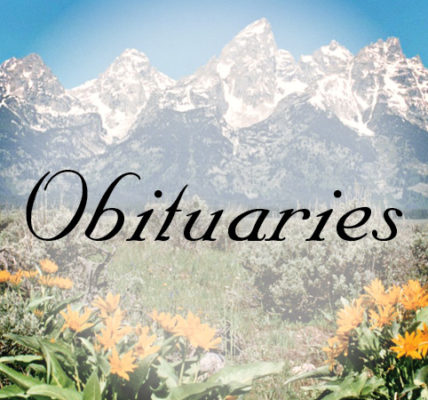
With hunting season just around the corner, the Wyoming Game and Fish Department has released their hunting forecast for the various areas in the Cowboy State. Here is the information regarding the Jackson Region:
Pronghorn
The Jackson Region harbors a small migratory segment of the Sublette antelope herd in Hunt Area 85. Antelope wintering in the Pinedale region experienced extreme winter mortality as a result of the unprecedented winter severity as well as an outbreak of Mycoplasma bovis this year. In early May, approximately 75 percent of radio-collared adult doe pronghorn from an on-going study had died. This prompted an emergency rule to reduce antelope licenses in the affected hunt areas, which included closing Hunt Area 85 for the 2023 hunting season. Regional managers will assess recovery of the Jackson segment of the Sublette herd and may recommend to the Wyoming Game and Fish Commission to re-authorize hunting seasons in future years as appropriate.
Mule deer
Portions of the Sublette and Wyoming Range herds are managed in the region, including Hunt Areas 150-152, 155-156 and 144-146. Both herds experienced substantial winter mortality due to winter severity this year. As a result, the Commission approved several changes to the 2023 season. Hunters will see shorter season lengths, three point antler restrictions, reduced non-resident quotas and the elimination of the doe/fawn opportunity for youth hunters. The impacts of this winter were significant and Game and Fish managers continue to monitor these herds closely. Hunters should expect to see significantly fewer deer on the landscape this fall. However, we expect to document increased survival, body condition, fawn production and herd recovery in upcoming years, similar to what we have documented following previous severe winters. While the 2023 season will have fewer deer on the landscape, restrictive season structures, and fewer non-resident hunters, Game and Fish is confident that harvest will not restrict the growth potential of these herds in this or future years. Hunters can get their deer tested for CWD by collecting a sample themselves and sending it to the Wildlife Health Lab or by bringing the head to a game check station or Game and Fish regional office during office hours.
The Jackson Region also includes the Targhee mule deer herd (Hunt Area 149) and Hunt Area 148 of the Dubois mule deer herd, both of which contain low deer densities and see limited hunter numbers and harvest.
White-tailed deer
Small populations may be found near riparian habitats throughout the region, and all hunt areas in the region offer the opportunity for hunters to harvest white-tailed deer during the general season. There are limited quota Type 3 (any white-tailed deer) and Type 8 (doe/fawn white-tailed) deer licenses available to provide additional late season opportunities. Hunters holding a Type 3 or Type 8 white-tailed deer license for the combined hunt areas of 148, 150, 151, 152, 155 and 156 may obtain permission slips to hunt on the National Elk Refuge. Hunt periods on the Refuge are approximately 6-8 days long and run from Sept. 1 – 14 (archery only) and Sept. 15 – Nov. 22 (firearms and archery). Visit the National Elk Refuge webpage for more information or contact the Jackson Game and Fish Regional Office for assistance. Hunters are encouraged to have their deer tested for CWD by bringing the head to a Game and Fish regional office or hunter check station. Mandatory sampling is required for white-tailed deer harvested on the National Elk Refuge.
Elk
The region manages four herds (Jackson, Fall Creek, Afton and Targhee) that currently contain at least 17,000 elk and are within management objectives. These areas provide a wide range of hunting opportunities and vary from early-season rifle hunts for branch-antlered bulls in the Teton Wilderness to late antlerless elk seasons on private lands to address elk damage to stored crops and co-mingling with livestock. Despite the severe winter, overall elk mortality was relatively low because the majority of elk in these herds are supplementally fed on feedgrounds. Some feedgrounds had higher calf mortality this winter than normal, but hunters should still expect to see typical elk numbers in most hunt areas. Hunt Area 75 (Grand Teton National Park) licenses were reduced in quota and season length in an effort to shift management towards population maintenance as opposed to population reduction based on survey data and herd unit objectives. Hunters can get their elk tested for CWD by collecting a sample themselves and sending it to the Wildlife Health Lab or by bringing the head to a Game and Fish regional office during office hours or game check station. Mandatory sampling is required for all elk harvested in Hunt Areas 75 (Grand Teton National Park) and 77 (National Elk Refuge).
Moose
All or parts of the Jackson, Sublette and Targhee herds are found in the region, and all are managed under a special management strategy to provide recreational opportunities while maintaining a harvest of older age-class bulls. While moose numbers remain below desired levels, hunters lucky enough to draw a license should experience high success and have a good chance of harvesting a bull. Moose fared well last winter in the cold and deep snow conditions. Higher moose mortality has recently been observed during warmer winters. Moose hunters are encouraged to submit the two front incisors (lower teeth) from their harvested moose for aging, which is helpful for managers to evaluate herd status. Successful hunters are also encouraged to bring their moose head to the Jackson Game and Fish regional office for sampling to help with ongoing disease surveillance such as CWD, carotid artery worms, etc.
Bighorn sheep
The Jackson (Hunt Area 7) and Targhee (Hunt Area 6) bighorn sheep herds are found in the region. Sheep numbers in Hunt Area 7 are above management objectives which is particularly concerning in this herd. In previous years, when sheep numbers have neared their current levels, the population has experienced significant mortality events due to pneumonia outbreaks. The current season structure is designed to prevent a large-scale pneumonia outbreak; with a secondary benefit of curbing impacts to future hunting opportunities if an outbreak can be prevented. Type 1 (any sheep) license numbers were reduced this year due to trends of increasing hunter effort and decreasing harvested ram age. Type 6 (ewe/lamb) licenses were increased to 30 licenses to decrease the population to its objective. Ewe sheep hunters should plan for a remote, backcountry bighorn sheep hunt. Hunters willing to spend the time and effort should have a high opportunity for success. Type 6 ewe hunters should expect that most ewes will be found at high elevations of typically 9,000 feet or more during the archery and rifle seasons. Ewe hunters may hunt within the Gros Ventre drainage, which includes all tributaries that flow into the main drainage including Crystal Creek, Shorty Creek, East and West Miner Creeks. All sheep hunters (including ewe hunters) are reminded that they are required to register their sheep at a Game and Fish office within 15 days of harvest.
The Targhee herd quota was increased from one to two this year and includes one resident and one nonresident license, which the herd can biologically support. The regular season will open earlier in the northern portion of the herd to encourage a more even distribution of harvest throughout the herd. This is a challenging hunt due to the terrain and the fact that most sheep reside in Grand Teton National Park and are unavailable to hunters. However, it also provides a unique opportunity to hunt sheep in a spectacular setting.
Mountain goat
The quota for Hunt Area 2 mountain goat licenses were reduced in 2023 to reflect a decline in the number of goats counted during the 2022 mid-summer trend count. The Palisades herd still offers hunters the opportunity to harvest trophy-class billies that typically are at least 5 years old. Hunter’s success is usually high at between 90-100 percent and is made up primarily of older age-class billies.
This will be the fifth year for the Type A (any mountain goat) license in Hunt Area 4. This was created to reduce mountain goat numbers in the Teton Range and minimize the expansion of mountain goats into important bighorn sheep habitats of the Targhee herd. Unlike mountain goat Type 1 and Type 2 licenses, Type A licenses are not once-in-a-lifetime and hunters could potentially draw a license and hunt mountain goats every year. Due to the success of past hunting seasons in Hunt Area 4 and Grand Teton National Park efforts, mountain goat densities are currently low throughout the Teton Range. License numbers were increased from 4 to 5 in 2023 and are available for residents only, but hunter success is still expected to be very low. No mountain goats were harvested last year in this area. In previous years, Hunt Area 4 Type A licenses were valid in Hunt Area 5 and vice versa. However, that is not the case this year with the closure of Hunt Area 5 for the 2023 season.
Bison
The Jackson bison herd is at the lower end of the annual trend count objective. As a result, the Type 4 (any female or calf) licenses were removed and the Type 1 (any wild bison) quota was reduced. The early snow and weather during the 2022 season resulted in high harvest success but was an anomaly compared to recent years. Recent trends by which mild weather and aversion to hunting pressure on the National Elk Refuge have resulted in delayed or lack of movement from Grand Teton National Park into the open hunt area on the Refuge. These conditions make it difficult to achieve harvest, often with an extremely limited number of days when bison are available for harvest on the Refuge. Some bull hunting occurs on national forest lands, but bison availability is intermittent and low. For this reason, Type 1 license holders are encouraged to capitalize on any harvest opportunity that is available as opposed to selecting for bulls only. To hunt on the Refuge, bison hunters must obtain an access permission slip through the Wyoming Game and Fish Department’s AccessYes program. Since there are few bison hunters this year, the Refuge is not using hunt periods. Instead, bison hunters can obtain a permission slip valid from Aug. 15 – Jan. 1 on the Refuge. Bison hunters are reminded that they must obtain a harvest reporting card, tooth envelope and blood collection tube at the Jackson Game and Fish office before their hunt.
Upland and small game
Due to the region’s small and isolated population of sage-grouse, hunting seasons are not offered. Hunters interested in upland game birds can find some of the best blue (dusky) and ruffed grouse habitats in the state. Seasons run from September through December. Late-season hunters need to be mindful of winter range closures in some areas that begin in December.
Weather and habitat conditions
Mule deer and pronghorn that summer in the Jackson region and winter in the Pinedale region will take multiple years of favorable weather conditions to recover from the 2022-23 winter. The 2023 spring moisture will aid in providing a prolonged growing season, however if the hot/dry weather of late August persists, early fall conditions could result. The Jackson Region represents a small portion of the Greater Yellowstone Ecosystem and is a weather-driven system. Game and Fish managers continue to work with partners to increase habitat resilience and permeability for animal movement to increase the ability of wildlife to buffer the impacts of extreme weather events and to manage wildlife populations towards management objectives.





